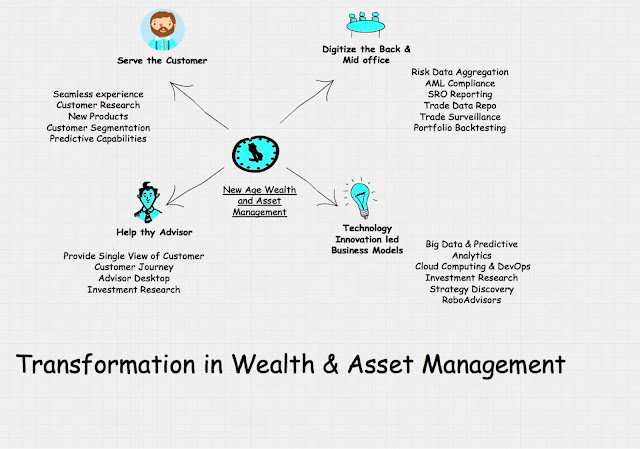Mobile Wallets: What's Stopping Retail Consumers From Leaping On The Bandwagon
US customers' hobby in cellular wallets has ebbed and flowed
for the past seven years, relationship again to may additionally 2011 when the authentic google wallet debuted.
Purchasers in the course of that span have been confronted
with a developing listing of cell wallets from the 1/3-celebration vendors,
numerous monetary establishments, or even outlets consisting of Starbucks and
target, which have proprietary structures specific to their stores.
However more options in the US haven't always brought about
elevated mobile wallet use the past seven years. At the same time as in-app
cellular bills hold to jump way to the likes of amazon, the aforementioned Starbucks
and uber, to call a few, the pays nonetheless battle to discover steady use
from consumers.
That could in the end be approximately to alternate, as a
minimum according to a current customer survey from tsys.
"with this observe, it is without a doubt the first
time we have visible significant numbers of customers saying they plan to use
digital wallets in the subsequent year or ," Gavin Rosenberg, senior
director of product marketing at tsys, informed cell bills these days in an
interview about the organization's 7th annual purchaser bills take a look at.
The take a look at, which tsys carried out ultimate year and
polled 1,200 customers approximately diverse bills choices, found that "68
percentage of respondents who've already loaded a fee card right into a
cellular wallet or are really or probable to achieve this, indicated that
inside years they may make 50 percent or extra of their in-save purchases the
use of a digital pockets."
Of course, there's a difference among intent and real use,
and Rosenberg believes the cell wallet's consumer enjoy will in the end help
decide whether elevated adoption can be of the hockey stick-growth range, or a
slow, steady rise within the next couple of years.
"If you may remove that friction from the revel in and
make something clean for people, they'll adopt it," Rosenberg said.
Not especially, more youthful customers are predicted to
assist power that cell pockets growth in the destiny, in keeping with the look
at.
Whilst the look at did now not smash it down to an precise
percentage, tsys located that in standard, clients between the ages of 25-34
are by and large in all likelihood to be interested by or already the usage of
an assortment of mobile features in banking apps and cell wallets.
OF THOSE FEATURES, PERSON-TO-PERSON BILLS HAVE BENEFITED THE MAXIMUM FROM MORE YOUTHFUL CLIENTS.
Forty-5 percentage of consumers among the whole of 25-34
have used p2p payments. There wasn't an excessive amount of a drop with the
next age organization, 35-forty four, which checked in at 37 %.
Even 12 percent of purchasers over the age of 65 have used
p2p bills.
Venmo and square coins really have the millennial
demographic included for p2p payments. However older customers could have been
swayed to use Zella way to the heavy advertising push from the huge banks
involved in that gadget.
"[there are] two [reasons] why we've seen [p2p
payments] have big interest from clients," Rosenberg said. "The
reports that have been delivered via some of the progressive solution providers
[like venmo and square cash] have pushed use amongst tech adopters.
"And now we are seeing the banks have embraced it and
driven it out to their clients. There's this underlying notion that if the
answer is coming from their financial institution, the diligence has been
achieved and that [Zella] is at ease."
However, protection, or perceived lack thereof, is still the
pinnacle reason why customers, especially older ones, pull away from banking
apps, cellular wallets and emerging technologies consisting of voice
assistants.
As an example, consumers aged fifty five and older have the
greatest issue approximately the safety of p2p bills at 45 percent compared to
29 percent of the 18-24 age groups.
Standard, tsys concluded the survey findings advocate
security might also impact the pace at which clients adopt rising price
technology.
Customers now also appear more uncomfortable using
"dependable" payment methods together with credit and debit, most
likely because of excessive-degree facts breaches.
One unexpected end result, as compared to 2017, is that
consumers agree with cash is the safest option for in-keep purchases over
credit and debit. Some 36 percent of respondents believed that to be the case,
up from 32 percentage remaining 12 months.
Clients in 2017 regarded credit cards as the most securein-store payment technique as 35 % of respondents selected that choice. That
parent dropped to 29 % this year.
Debit cards were deemed safe by means of 25 % of respondents
in 2018, up from 18 percent in 2017.
Rosenberg believes the enterprise has carried out what it
could to soothe safety issues with emerging technologies with developments
which include biometric authentication, encryption and tokenization. But he also
recounted that information breaches will continue to affect how purchasers
might pay for things inside the future irrespective of how clean it might be.
"Till breaches forestall occurring, I don't suppose
human beings are going to forestall being involved about statistics
security," he said.




Comments
Post a Comment